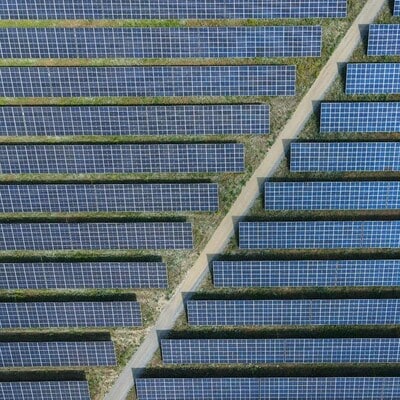)
Photo: Representative | AP
A ChatGPT query needs nearly 10 times as much electricity to process as a Google Search, a study by Goldman Sachs report claims. With Artificial Intelligence (AI) gaining momentum and as an increasing number of data centres focus on catering to the AI workloads, analysts expect the power consumption by data centres to increase.
Players in the industry concur that with conventional power sources getting costlier every year, a lot of them would invest more in alternate power sources. Some of the players that Business Standard spoke to said that they see their renewable energy usage go up to 80 per cent of their total energy needs.
Data centres procure electricity at commercial rates in a state, which is usually in the highest power tariff slab.
Hiranandani Group’s data centre foray, Yotta aims to source over 80 per cent of its power from renewable energy sources in the next three to five years. Similarly, Hyderabad-based CtrlS has set a goal of achieving 100 per cent renewable power by 2030.
“The recent power demand surge, with a 4.4 per cent year-on-year increase to 139 billion units in June 2023 and just a 0.4 per cent growth in power generation capacity in Q1 FY24, accentuates the urgency for data centre players to look at alternate sources and models to ensure continuity of operations,” said Rohan Sheth, Vice President, Colocation & DC Build at Yotta.
Sheth said that at present Yotta data centres get 30 per cent of its power from green energy sources, which they intend to raise it to 60 per cent in a few years. At present the firm sources its renewable energy from hydro and solar plants.
At present, the main source of power for data centres is the electricity supplied by the state’s power distribution companies (discoms) which is majorly coal/thermal power. Data centre players are increasingly investing in building their own renewable energy, which then gets fed into the state power grid. By doing this, players also make sure that they get 24/7 power access for their operations.
According to a Colliers report, total data centre power capacity in India is at 778 MW. The report further highlighted that the Indian data centre industry is experiencing a steady growth due to rapid digitalisation, improved tech infrastructure, and advanced technologies like 5G, AI, blockchain, and cloud computing.
For instance, Hyderabad-based CtrlS set up a solar plant in Nagpur to power its Mumbai data centres through the government’s green open access route, the first phase of which has generated 50 megawatt (MW) of power.
Vipin Jain, President of Data Center Operations at CtrlS, said that the company has grown its power generation capacity by 2.5-3 times in the last three years, reaching 260 MW currently.
India currently has 235 data centres, according to data from Data Center Map. CtrlS has 15 operational data centres and Yotta, five.
Emails sent to data centre players such as Adani Connex and NTTData did not elicit any response.
Investing in generating their own power also makes sense as AI workloads also mean power per rack going up. The rising need of processing large volumes of data quickly over a short period has led to a surge in electricity demand among data centres.
Yotta has seen average rack power consumption surge from 3-4 kilowatt (kW) to 15-20 kW in recent years. The specialised graphic processing unit (GPU) racks used for Large Language Models (LLMs) and inferencing can now reach densities as high as 50-120 kW per rack.
CtrlS is also witnessing this trend. At present the company’s data centres are seeing new requirements of 20 kW per rack, and in some cases 45 kW per rack and it is expected that the next generation of AI and ML workloads will require up to 80-120 kW per rack, said Jain.
Data centre efficiency is measured using the power usage effectiveness (PUE) metric, which is calculated by dividing the total power consumed in the facility by the power used by the IT equipment alone. The ideal PUE is 1.1, indicating maximum efficiency. CtrlS and Yotta currently operate their data centres at a PUE of 1.4.
To improve energy efficiency, data centre providers are employing new cooling techniques. Yotta uses adiabatic chillers with free-cooling arrangements to pre-cool water using ambient air, automatically switching off compressors when temperatures drop, said Sheth.
CtrlS is preparing for the high power and heat generated by AI and ML workloads by adopting liquid cooling in upcoming facilities, using a mix of liquid and air cooling for greater efficiency.
The data centre industry has been a key focus area for the government with initiatives such as the issuance of a draft Data Center policy in 2020 and granting infrastructure status to the sector in the Union budget of 2022-23. Data centres were included in the Harmonised Master List of Infrastructure sub-sectors through the inclusion of a new item under the ‘Communication’ category, enabling them to get easier access to institutional credit at lower rates and attract foreign investments.
Yotta aims to grow focusing on four key areas: Developing hyperscale, AI-ready data centre campuses; expanding enterprise colocation services, delivering India’s sovereign public cloud and increasing its AI-powered cloud services.
Beyond strengthening its presence in India, Yotta also plans to expand internationally into markets like Bangladesh and Nepal.
CtrlS is also planning to expand its footprint across India. In the coming year, the company intends to set up 8-10 additional edge data centres in Tier-II cities including Guwahati and Jaipur.
As the data centre industry in India continues to grow, sustainability has emerged as a key priority.
First Published: Aug 05 2024 | 2:42 PM IST
